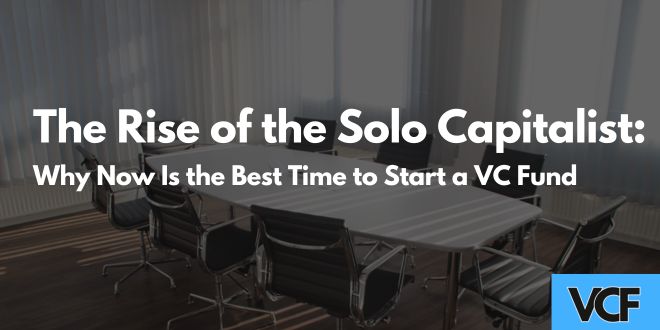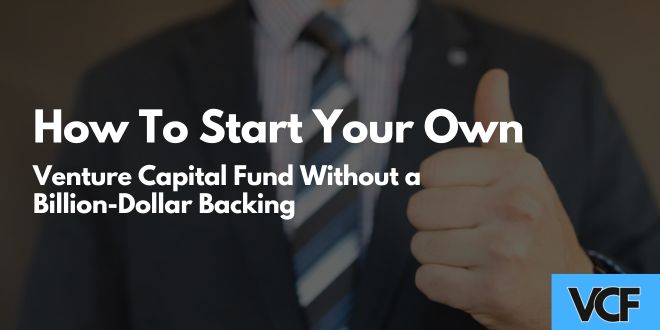If you browse headlines in the Venture Capital Funding world, it can feel as though every new fund needs a war chest the size of a small nation’s GDP. Tiger raised $12 billion here, SoftBank dropped $100 billion there—so where does that leave a mere mortal who wants to back startups but doesn’t happen to be best friends with a Middle-Eastern sovereign wealth fund?
Good news: launching a venture fund today is less about nine-figure commitments and more about focus, resourcefulness, and a dash of scrappy hustle. Below is a roadmap—equal parts practical checklist and pep talk—on how to get your first fund off the ground without an eye-watering pile of cash.
Step 1: Nail a Focused Investment Thesis
Think of your thesis as the elevator pitch you’ll recite a thousand times: Why you, why now, and why this corner of the market? Modern LPs don’t want another generic “early-stage tech” fund; they want domain expertise. Maybe you’re a former fintech product manager who sees gaps in B2B payments, or a sustainability engineer obsessed with carbon-tracking software. Condense that passion into a three-sentence thesis that’s:
- Specific (stage, geography, sector).
- Backed by data (TAM, growth rates, exit comps).
- Personal (your unfair advantage in sourcing or supporting deals).
A tight thesis compensates for a small fund size because it signals discipline—and discipline is catnip to capital allocators.
Step 2: Build a Personal Track Record Before You File an LLC
Imagine asking strangers for millions when you’ve never invested a dollar of your own. Tough sell. Before raising a blind-pool fund, create a micro-portfolio via:
- Angel checks (even $1,000 on AngelList or Republic counts).
- Special-purpose vehicles (SPVs) where you recruit friends to co-invest deal-by-deal.
- Syndicates on platforms like AngelList or Stonks, letting you piggy-back on experienced lead investors.
Treat each check like a mini case study. Write why you invested, what traction you saw, and how you supported the founders afterward. A handful of well-documented wins outweighs dozens of spray-and-pray deals.
Step 3: Learn the Legal and Regulatory Terrain Early
Paperwork isn’t sexy, but it’s cheaper to do it right than fix it later. In the U.S., two acronyms dominate: the Investment Company Act of 1940 (which you’ll likely dodge via Section 3(c)(1) or 3(c)(7) exemptions) and the Investment Advisers Act (you may qualify for an Exempt Reporting Adviser status). Translation: hire counsel who lives and breathes VC fund formation.
Expect about $25k–$40k in legal fees for a sub-$25 million “micro-fund,” less if you use modern digital providers like AngelList’s Rolling Funds, Allocate, or Carta. Build that cost into your budget so you’re not panhandling for legal bills right when you should be wiring capital to founders.
Step 4: Assemble a Credible (But Lean) Core Team
Limited partners bet on teams, not logos. A killer combo is:
- One partner with operating chops (helps portfolio companies land customers).
- One partner with capital-raising chops (keeps the fund alive).
- A venture partner or advisor network that opens doors.
Don’t bloat payroll on day one. Offer advisors carry instead of cash; 1%–5% of fund economics can entice heavyweight mentors without draining management fees. Remember, a $10 million fund charging the standard “2 and 20” generates just $200k in annual fees before expenses—hardly enough for a lavish headcount.
Step 5: Court the Right LPs—They’re Closer Than You Think
Your first-time fund probably won’t snag CalPERS or an Ivy League endowment. Target:
- High-net-worth individuals who know you personally (former bosses, founders you helped).
- Small family offices hunting for access to early-stage deals.
- Fund-of-funds dedicated to emerging managers (Screendoor, Ahoy Capital, Recast).
- Corporations seeking strategic insights in your niche.
Build a simple data room: pitch deck, sample quarterly report, legal docs, and track-record highlights. Then, convert coffees into soft commitments. Rule of thumb: over-subscribe by 20% to buffer last-minute drop-outs.
Step 6: Start Small—Micro-Funds, Rolling Funds, and Evergreen Vehicles
The median U.S. seed fund in 2023 was just $18 million. Some of today’s marquee investors—First Round, Floodgate, Initialized—began with less. Options for a capital-efficient launch:
- Micro-Fund: Traditional closed-end vehicle, $5–$15 million, three-year investment period.
- Rolling Fund: Quarterly subscription model via AngelList; LPs commit in tranches, letting you scale AUM as you prove yourself.
- Evergreen LLC: Recycle returns into fresh deals, sidestepping the ten-year clock. Best for solo GPs who want flexibility.
Small isn’t a bug; it lets you write $100k–$250k checks—perfect for pre-seed rounds most mega-funds ignore.
Step 7: Create Real Value Beyond the Check
Cash is a commodity; expertise is oxygen. Ask founders what headaches keep them up at night. Common pain points you can tackle:
- Customer introductions: Build a stable of mid-market or enterprise contacts.
- Talent: Spin up a Notion database of vetted engineers and designers.
- Storytelling: Help with deck design, metrics narrative, and press outreach.
- Follow-on capital: Host demo days or warm intros to Series A funds.
Document every assist in an internal CRM. Come next fundraise, you’ll have tangible proof you’re more than a wire transfer.
Raise an Opportunity-Specific SPV
Maybe you stumble on a breakout startup but your fund is still a gleam in your eye. Form an SPV just for that deal. Minimum legal cost, max credibility signal. When you tell future LPs you already led a $1 million SPV into “HotCo,” you suddenly look like a fund manager in practice, not theory.
Common Mistakes to Dodge
- Overpromising IRR: Early-stage investing is a 10-year art project, not a quarterly earnings play.
- Skimping on back-office: LPs hate messy K-1s; outsource admin to trusted vendors.
- Chasing trending sectors you don’t understand: Web3, AI, climate—pick the one you can genuinely add value in, not the one pumping on Twitter.
- Raising too large a first fund: Better to deliver 4x on $10 million than 1.5x on $50 million.
The First Close: When It All Gets Real
After months of Zooms, coffees, and feedback loops, you’ll hit the magical threshold—often 40%–60% of target capital—that lets you “close” and begin investing. Momentum begets momentum: founders start pitching you, late-deciding LPs jump in, and you move from hypothetical to operational. It’s exhilarating and nerve-racking, but remember: every firm you admire once stood right where you are, wires pending and hands shaking.
Conclusion
Goliath-scale funds can outspend you, but they can’t out-hustle you. A tight thesis, a genuine network, and relentless founder support trump raw capital in the early innings. If you’re willing to trade lavish offices for scrappy resourcefulness, you can absolutely carve out a profitable niche in Venture Capital Funding without ever seeing a billion-dollar check.
So tighten that pitch deck, book those coffees, and start writing chapter one of your own fund’s story. The next legendary firm might not reside on Sand Hill Road—it might be brewing in your spare bedroom right now.







